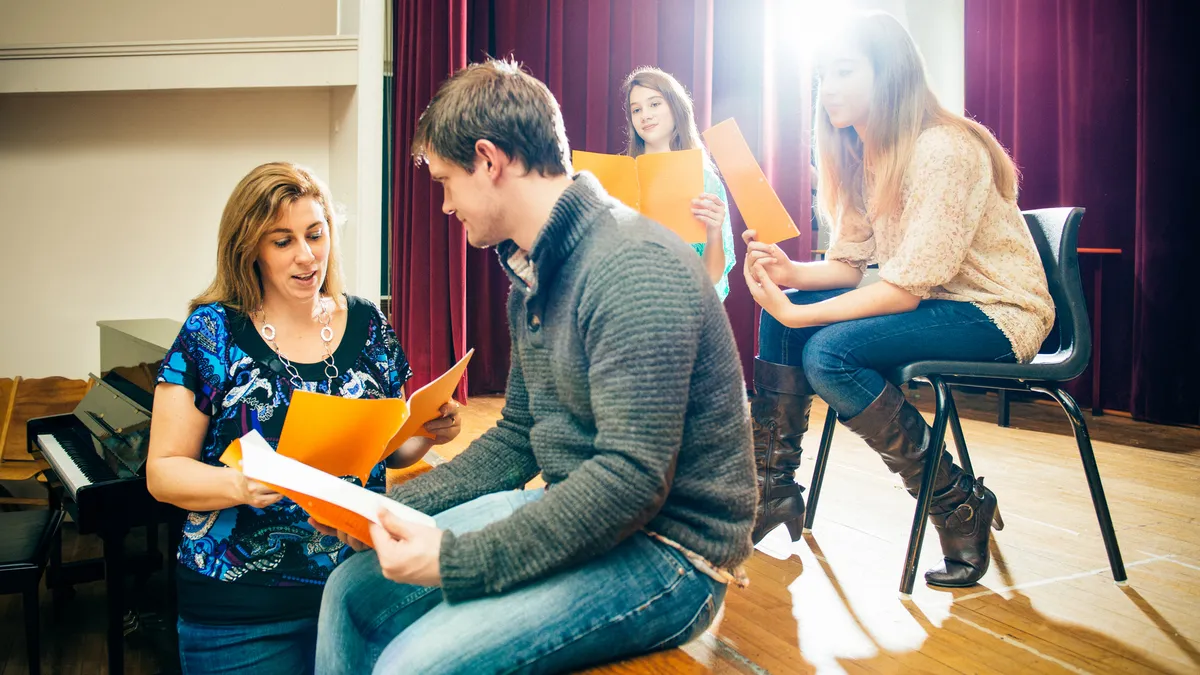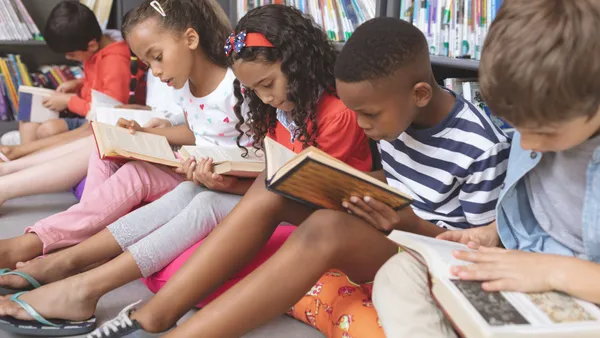Dive Brief:
- Through a 20-week theater arts and conflict resolution program, some students in Sacramento, California, are learning not just about acting, but how to develop nonviolent responses to conflict and to foster community.
- The Northern California School of the Arts — or NorCal Arts — works with around 800 to 900 students across six Sacramento schools every day through its arts-infused after-school program, according to Michele Hillen-Noufer, NorCal Arts’ executive director. The organization also offers summer and spring break camps, as well as a nine-month training program for 7th to 12th graders interested in pursuing acting professionally.
- Research shows that continued engagement in the arts can lead to improved emotional self-regulation, responsibility and collaboration, or confidence in expressing complex ideas stemming from personal thoughts and feelings.
Dive Insight:
Hillen-Noufer first realized arts education didn’t just provide a great opportunity for incorporating social-emotional learning, but that it also offered a way to teach conflict resolution, by reflecting on her experience as an actor.
She found that the best way to calm pre-show jitters and fear was to lean on the weeks of rehearsal prior to opening night. In that same vein, including conflict resolution in theater arts allowed students to rehearse the best dialog and approach to communicating about conflict, so they could lean on all their practice and learned knowledge when conflict did arise.
“It’s giving them a roadmap to navigate the conflicts that we all as humans experience every day,” Hillen-Noufer said.
Using this allegory, she applied for and received a $600,000 grant from the U.S. Department of Homeland Security’s Center for Prevention Programs and Partnerships to provide Title I schools in Sacramento with a program that integrates theater arts, social-emotional learning and conflict resolution. While the two-year grant ended last fall, support for the Theater Arts & Conflict Resolution Integrated Program continued and is now being funded through state funds like those provided for arts education under Proposition 28, in addition to other grants, according to Hillen-Noufer.
Based on responses from an internal survey, 99% of teachers affirmed the program's value for their students, and 98% stated that the students were given opportunities to practice effective communication, Hillen-Noufer said.
According to Pamela Randall, senior staff advisor for the Collaborative for Academic, Social and Emotional Learning, art naturally aligns with the five core competencies of social-emotional learning: identity, agency, belonging, collaborative problem-solving and curiosity.
To best foster these competencies and allow children to expand their curiosity, it is necessary to create a safe learning environment, Randall said.
Students “want to feel like they're in a classroom, school or district where they can take risks and they can make mistakes, and it's still psychologically safe for them to make those mistakes,” Randall said.
Randall added that while art education lends itself to these pedagogical strategies, these are not exclusive to art. Not only can they be applied in other areas, like math or science, but they should be, Randall said.
NorCal Arts also serves as a pipeline for future classroom theater, music and dance teachers. The program employs artists and trains them as teaching artists, opening new doors for those with skills and talents who may have not considered going into teaching.
The program is also making art more accessible to students. Bringing productions like “The Wizard of Oz” or “Beauty and the Beast Jr.” to these schools gives students the opportunity to get a sense of the different art modalities that go into a production, such as lighting design, singing, dancing and acting. It also gives them access to professional tools like costumes, microphones and lights to perform these functions.
“If we can give the gift of the artistic process to students, what an amazing benefit that will be, because they might change their perception of themselves and of others in the world,” Hillen-Noufer said.







 Dive Awards
Dive Awards






